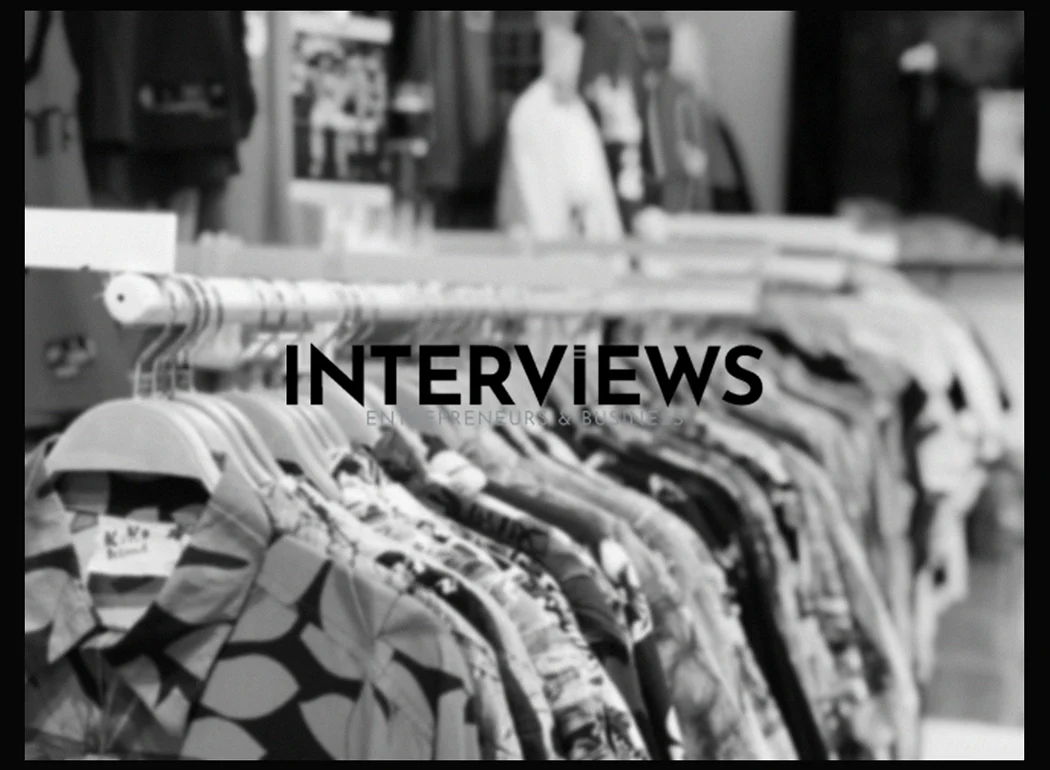Starting a clothing brand, eh? Sounds glamorous, right? Runway shows, VIP parties, and racks upon racks of threads with your name on them. The reality? It’s less glitz and more grit, especially at the beginning. But hey, if you’ve got the vision and the hustle, you absolutely *can* make it work. Think of this not as a walk in the park, but more like a stylish sprint through a thorny, yet potentially very lucrative, fashion jungle. Ready to trade daydreams for deadlines? Let’s dive into the nitty-gritty of launching your clothing line.
Step 1: Brainstorming and Blueprints – Aka, The Thinking Cap Phase
Before you even think about fabric swatches or sketching designs, let’s get your concept crystal clear. This is where you answer the big “why” and “what” questions.
Define Your Brand’s DNA
What’s your brand’s unique selling proposition, or USP? In simpler terms, what makes you different? Are you all about sustainable streetwear? Luxury loungewear? Affordable and trendy basics? Pinpoint your niche. And crucially, who are you trying to dress? Knowing your target audience is non-negotiable. Are you designing for Gen Z eco-warriors or sophisticated baby boomers? Knowing this shapes everything from your designs to your marketing.
Craft a Business Plan – Your Roadmap to Riches (Hopefully!)
Think of a business plan as your clothing brand’s treasure map. It outlines your goals, who you’re selling to, how you’ll spread the word (marketing strategy), and, most importantly, how you’ll make money (financial projections). Don’t skip this step. Flying by the seat of your stylish pants might sound cool, but a solid plan is your anchor in the often chaotic seas of entrepreneurship.
Market Research – Become a Fashion Sherlock
Dive deep into the current fashion scene. What’s hot, what’s not? Who are your competitors, and what are they doing right (and wrong)? Understanding fashion trends and genuine customer needs is like having insider information. Are people craving more comfortable yet chic work-from-home wear? Is there a gap in the market for size-inclusive, ethically made activewear? Become a trend detective. Websites like Shopify and Business.com offer great guides on starting a clothing business and store respectively, and are worth checking out for deeper insights.
Step 2: Design and Development – From Idea to Garment Reality
Alright, time to get those creative juices flowing, but with a dash of practicality.
Develop Killer Designs – Sketch, Draft, Sample, Repeat
This is where your fashion design skills (or your designer’s skills, if you’re outsourcing this bit) come into play. Sketch your ideas, create technical drawings (these are called tech packs – think blueprints for clothes, crucial for manufacturers), and then, the exciting part: make samples! Sampling lets you see your designs in 3D, check the fit, and fine-tune things before mass production. Don’t underestimate the power of good tech packs; they are your communication lifeline to manufacturers, ensuring your vision isn’t lost in translation.
Source Fabrics – The Feel-Good Factor
Fabric choice is paramount. High-quality fabrics elevate your brand and impact everything from how your clothes look and feel to their durability. Choose materials that align with your brand’s aesthetic and, of course, your target market’s expectations. Luxury brand? Think silks and fine wools. Eco-conscious brand? Organic cottons and recycled materials are your jam.
Production Considerations – Made by You, Them, or Machines?
How will you actually *make* these clothes? You’ve got options: * In-house production: You do it all yourself. Great for small, handmade operations, but scaling can be tough. * Outsourcing to a manufacturer: You partner with a factory to produce your designs. This is common for larger quantities, but finding the right manufacturer is key. * Print-on-demand service: No inventory needed! Designs are printed on garments only when an order comes in. Excellent for low-risk startups, but you have less control over production.
Step 3: Production and Sourcing – Making it Real, Reliably
So, you’ve opted to outsource production? Let’s navigate that terrain.
Find a Fantastic Manufacturer – Your Production Partner in Crime (or Style)
If you’re not producing in your own workshop, finding a manufacturer is crucial. Research is your best friend here. Look for a manufacturer who is not only reliable but also ethical. “Ethical” means fair labor practices, environmentally responsible processes – things that matter to today’s conscious consumers (and should matter to you too). Ask for samples, check their references, and ensure they can meet your quality standards and production timelines.
Manage Inventory – The Stocking Strategy
Develop a solid inventory management strategy. How much stock will you hold? Will you use just-in-time inventory to minimize waste, or keep larger quantities on hand? Consider storage, shipping, and potential risks like unsold stock. Effective inventory management is the unsung hero of a profitable clothing brand.
Step 4: Branding and Marketing – Shouting Your Style from the Rooftops (Digitally Speaking)
Time to make some noise and get your brand noticed.
Craft a Killer Brand Identity – Looks Aren’t Everything, But They Help
Develop a strong brand identity. This includes your logo (the face of your brand), your color palette (visual vibe), and overall visual style. Everything should resonate with your target audience. Think about brand personality too. Is your brand playful and quirky, or sleek and sophisticated? Develop a brand voice that reflects this.
Build an Online Empire – Your Digital Showroom
In today’s world, an online presence is non-negotiable. You need a website to showcase your brand and products, or at the very least, active and engaging social media accounts. Think of your website as your flagship store, open 24/7. Make it visually appealing, easy to navigate, and mobile-friendly.
Market Like a Maverick – Get the Word Out
Marketing is how you reach your target audience and turn them into paying customers. Leverage social media – create engaging content, run targeted ads, and build a community around your brand. Don’t underestimate the power of email marketing to nurture leads and keep customers coming back. Influencer collaborations can also be incredibly effective for reaching new audiences. And remember to craft a compelling brand story. People connect with stories, so make yours authentic and memorable. Qikink’s blog on starting a clothing brand from scratch emphasizes the importance of a strong brand story right from the outset.
Step 5: Sales and Distribution – Cha-Ching! Making Those Sales
Time to actually sell those fabulous clothes.
Set Up Shop Online – E-commerce Essentials
If you’re selling online (and you probably should be, at least initially), choose an e-commerce platform. Shopify is a popular choice for its ease of use and comprehensive features. Set up your online store – make it user-friendly, secure, and visually appealing. High-quality product photos and clear descriptions are crucial.
Consider Retail Partnerships – Beyond the Digital Realm
Don’t limit yourself to just online sales. Explore options for selling in brick-and-mortar stores or online marketplaces. Pop-up shops and markets are also fantastic for direct sales and getting immediate customer feedback. Direct selling at markets and pop-ups can be a great way to connect directly with your customers, especially in the early days.
Step 6: Legal and Financial – The Not-So-Glamorous But Essential Stuff
Let’s talk about the less exciting but absolutely crucial aspects of your business.
Register Your Brand – Protect Your Precious Name
Protect your brand name and logo by registering a trademark. This gives you legal protection and prevents others from copying your brand identity. Before you even settle on a name, conduct a thorough trademark search to make sure no one else is already using it in your category. Also, consider copyrighting your original designs. While a trademark protects your brand name and logo, copyright can protect your unique designs, especially initially.
Structure Your Business – Sole Prop, LLC, or Beyond?
Decide on your business structure. Will you be a sole proprietorship (simplest, but personal liability), an LLC (Limited Liability Company, offers personal asset protection), or another structure? For most clothing brands, especially as they grow, an LLC is a smart move for liability protection. An operating agreement for your LLC, even if not legally required in your state, is highly recommended to outline ownership, responsibilities, and operating procedures.
Manage Your Finances Like a Pro – Numbers Don’t Lie
Track your income and expenses meticulously. Create a budget and stick to it. Funding your clothing line can come from personal savings, loans, or even crowdfunding. Factor in startup costs, ongoing operational expenses, and marketing budgets. Remember to register your business name and structure legally before you start selling. Proper financial management is the backbone of any sustainable business.
Step 7: Crunching the Numbers – What’s This Gonna Cost Me?
Let’s talk money. Starting a clothing brand isn’t free, but the costs can vary wildly.
Decoding the Cost Equation
The cost to launch a clothing brand can range from a few hundred dollars (think super lean, print-on-demand) to tens of thousands, depending on your scale, business model, and production approach. Factors that influence costs: * Scale: Starting small-batch production is cheaper initially than mass production. * Business Model: Print-on-demand has lower upfront costs than holding inventory. * Software and Tools: E-commerce platforms, design software, and project management tools all add up. * Design Costs: Hiring designers or using advanced design software increases costs. * Production Costs: Manufacturing a full clothing line will naturally be more expensive. Expect to invest significantly in production, especially for larger lines. * Location: Rent for a studio or office, utilities, and staff salaries vary greatly by location. * Marketing Strategy: A comprehensive marketing plan with advertising and influencer outreach requires a bigger budget. * Inventory: Buying fabric and materials in bulk can be a significant upfront investment. * Marketing and Advertising: Allocate a realistic budget for marketing and advertising to reach your target audience.
Step 8: LLC Lowdown – Why It Might Be Your Best Friend
Let’s delve into the LLC (Limited Liability Company) structure a bit more, because it’s often the go-to for clothing brands for good reason.
LLC Perks – Protection and Professionalism
* Liability Protection: This is huge. An LLC shields your personal assets from business debts and lawsuits. If your brand hits a snag, your house and savings are generally safe. * Professionalism and Credibility: An LLC can boost your brand’s image, signaling to customers, suppliers, and investors that you’re serious business. * Separation of Finances: LLCs keep your personal and business finances separate, making bookkeeping and taxes much simpler. * Tax Benefits: LLCs can offer tax flexibility, allowing profits to pass through to your personal income, potentially reducing your overall tax burden.
When to Consider the LLC Leap?
* Substantial Personal Assets: If you have significant personal savings, property, or investments, an LLC is a smart layer of protection. * Taking on Debt or Seeking Funding: Lenders and investors often prefer to work with LLCs due to the clearer liability separation. * Scaling Up: As your brand grows, an LLC provides a more robust legal and financial structure for long-term planning and compliance. And yes, bonus tax tip: you *can* write off clothing as a business expense, but only if it’s specifically for business use and not something you could reasonably wear in everyday life. Think branded uniforms or very specific photoshoot outfits, not that trendy jacket you “need” for ‘research’.
Step 9: Key Success Factors – Beyond the Basics
Let’s round things off with some extra nuggets for clothing brand success. * Develop those Design Skills: Continuously hone your fashion design skills. Stay curious, keep learning, and experiment. * Trend Tracking is Key: Keep a close eye on fashion trends. Pay attention to fashion weeks, runway collections, blogs, and magazines. Follow your favorite designers and see what they’re up to. * Brand Value is Non-Negotiable: Build a strong brand identity and value proposition. This is what will set you apart in a crowded market. * Profitability is Possible: Yes, clothing brands can be profitable! But it requires smart management, understanding your target market, and pricing your products effectively. * It’s a Marathon, Not a Sprint: Starting a clothing brand is work, like any business. There will be challenges, but with perseverance and a solid plan, you can navigate them. As Qikink rightly points out in their guide, launching a clothing line involves many of the same steps as launching any business. * Hoodies Can Be Gold: Is selling hoodies profitable? Absolutely, due to the consistent demand for comfy casual wear. Think beyond trends and consider wardrobe staples too. * Trademark Before You Triumph: Remember to trademark your brand name early on! It’s a crucial step in protecting your brand identity. Shopify’s guide on starting a clothing business also highlights trademarking as a key early step. * Concept is King: Conceptualization is the very first and vital step in garment development. It’s the foundation for everything else. * Entrepreneurial Spirit Required: Launching your own fashion brand demands not just creativity but also strong entrepreneurial skills and solid business acumen. So, there you have it. Starting a clothing brand is a multifaceted journey, a blend of creativity, business savvy, and good old-fashioned hard work. It’s not always glamorous, but for those with passion and persistence, it can be incredibly rewarding. Now go forth and design your destiny!





